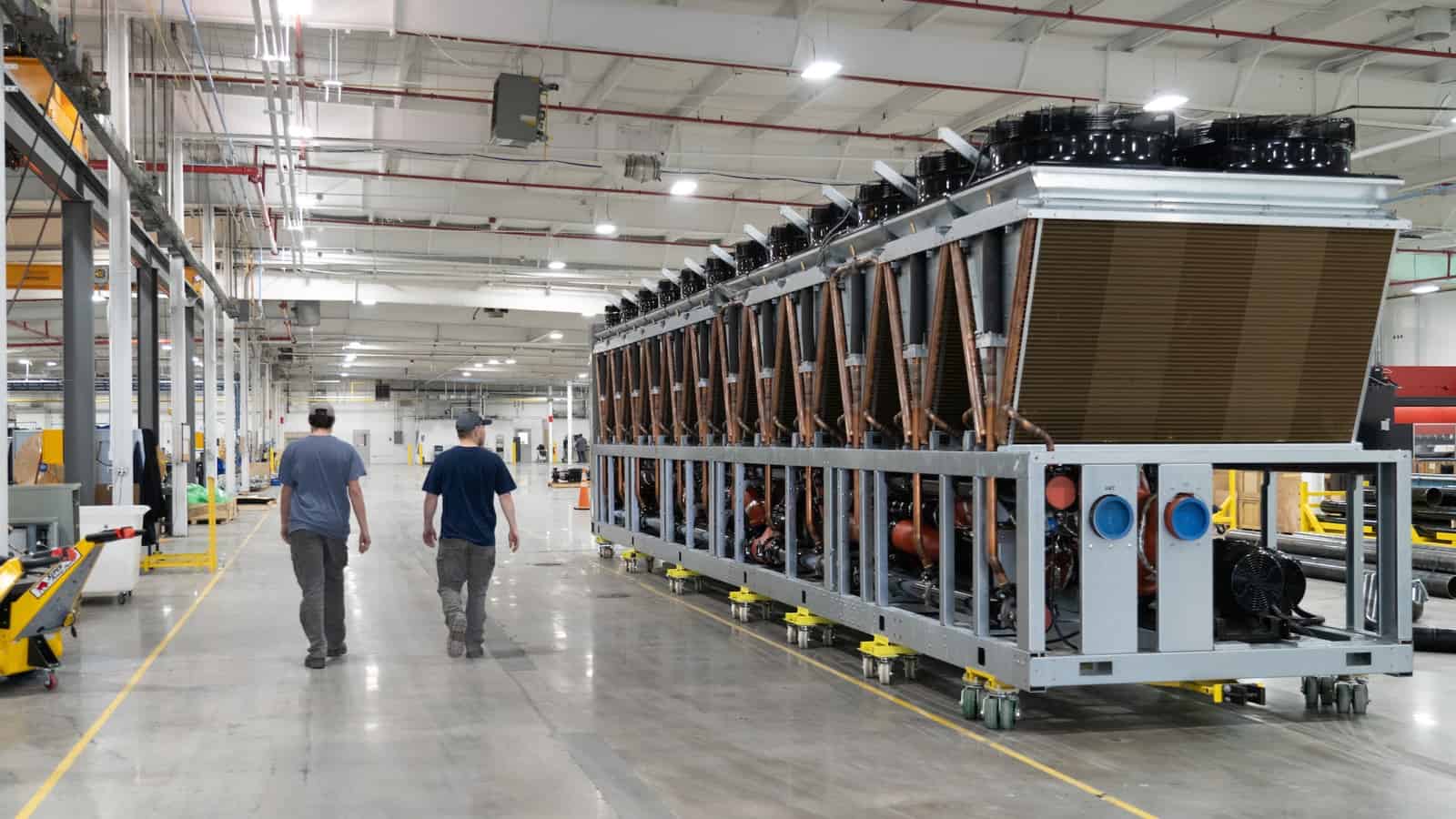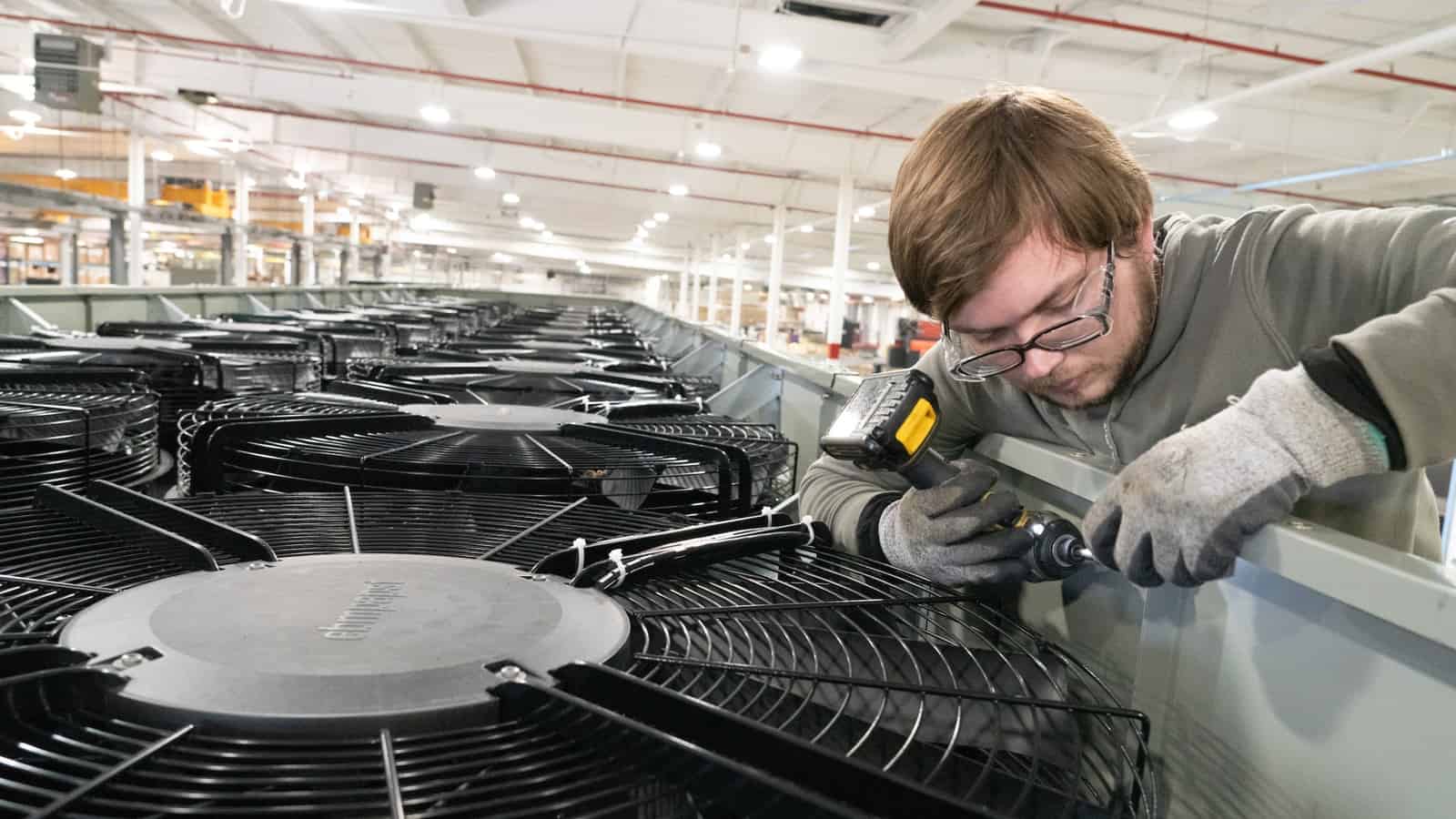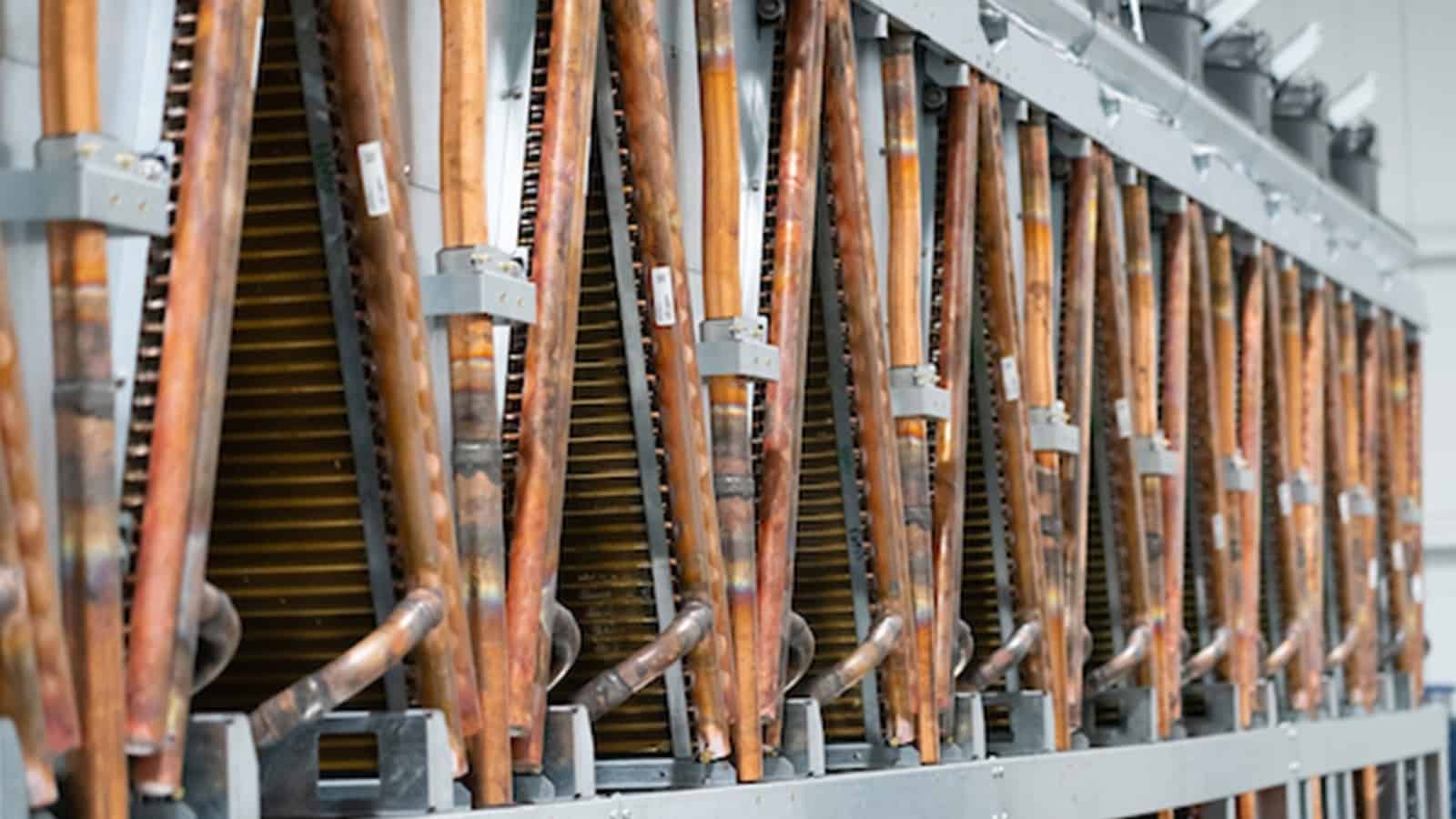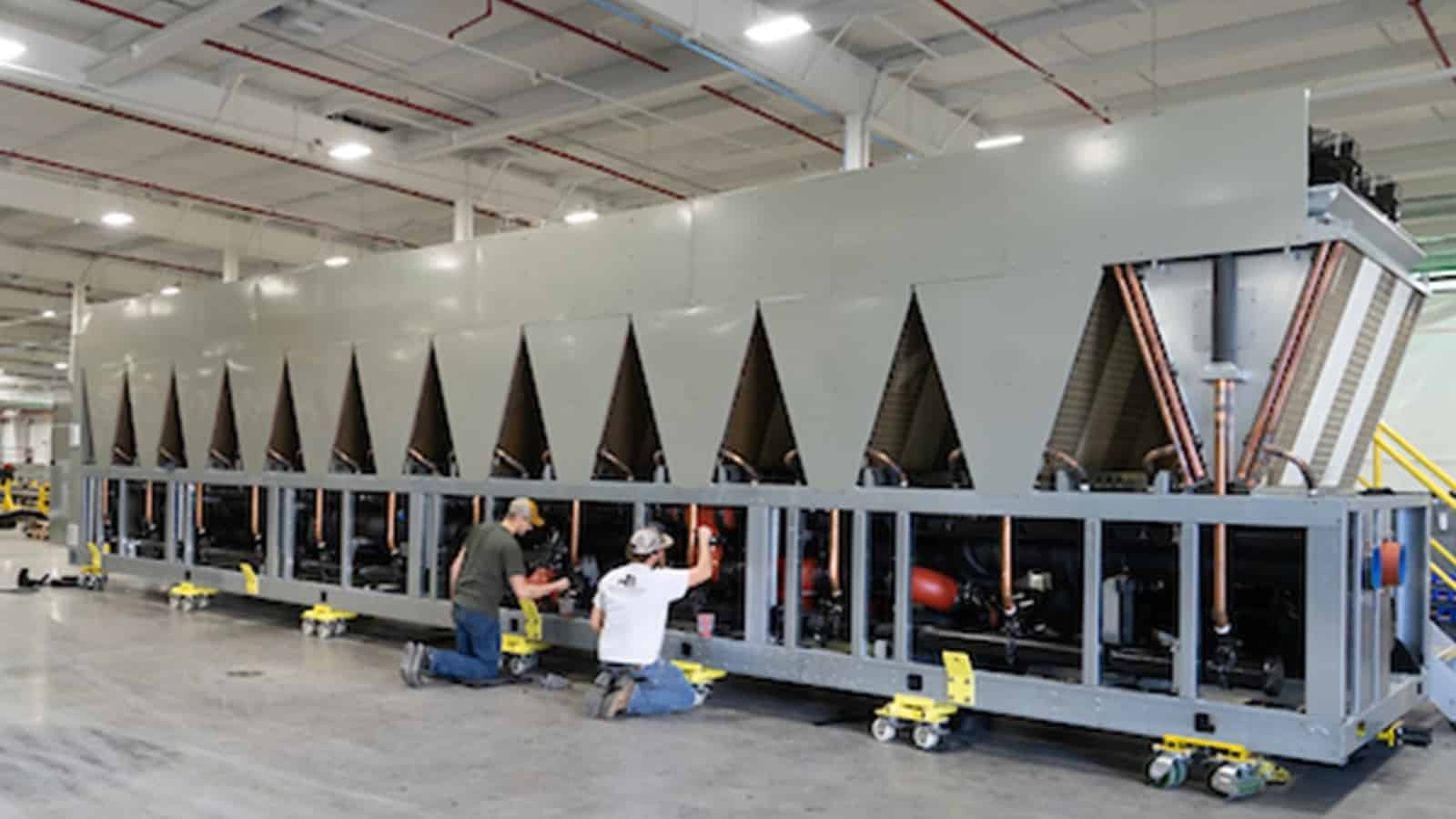Modine Keeps the Digital Economy Cool and Functional

Here’s the secret ingredient in the digital economy: data center chillers. All those enormous data centers that keep track of your bank account, work emails and lunch orders get very hot, requiring state-of-the-art cooling technology to keep them functional and efficient.
We recently got to see how these enormous machines are made, courtesy of Modine Manufacturing, which opened its first data center chiller production plant in Rockbridge, Virginia, back in November. NAM Senior Director of Photography David Bohrer captured the production line in action, while several of Modine’s leaders spoke to the NAM at a later date about the technology involved.
Why chillers? The demand for data center chillers rises with the demand for data, which seems to be pretty much endless nowadays.
- As Darren Farrar, Modine’s global head of marketing for data centers, explained, “Data centers are always on; they are constantly processing data and therefore producing heat. They use a lot of energy, so any incremental improvements we can make [in cooling technology] can make a lot of difference to energy bills.”
- That’s where Modine comes in. Though chillers have been around since the 1920s, the needs of the digital economy mean that further innovation and specialization are always necessary.
How it works: A chiller provides cool water to the data center building while removing the heat that is returned from it, in an endless cycle.
- Modine’s chillers have two circuits, one of which uses outdoor air to chill the water, in a process called “free cooling,” explained Rob Bedard, general manager of data centers, North America. It’s a method that provides considerable energy savings.
- The chiller also has a “classical” refrigeration circuit for when outdoor temperatures aren’t helpful. Last, fans on top of the unit vent heat away from the building.
How it’s made: The Rockbridge plant is Modine’s first data center chiller plant in the U.S. and is situated in Virginia due to the state’s high concentration of data centers, said Bedard. The facility is “purpose-designed” for production, and everything is done on site:
- Technicians cut the parts from raw materials, then add refrigeration, suction and the distinctive V-shaped pipes for coolant, explained Tommy Johnson, Rockbridge’s plant manager.
- The assembly line checks the pressure, ensures there are no leaks and does final testing, he added. The facility even hosts demonstrations for customers in a state-of-the-art test lab, so they know what they’re getting.
Here a team constructs the metal frame of the chiller and adds insulation to the copper pipework and heat exchangers that carry the refrigerant:

Another technician installs the massive fans on top of the structure, which draw air through the huge V-shaped heat exchangers, removing the heat and venting it upward:

These copper pipes circulate water through the unit:

And last, here is the nearly finished chiller, which stands an impressive 10.1 feet tall, 45.6 feet long and 7.8 feet wide:

What’s next: What does Modine predict for the future of this market?
- “As big IT companies develop high-density chips,” Farrar said, “existing data centers will only become more powerful—and thus hotter.” Meanwhile, the increasing use of AI and cryptocurrency will also lead to greater demand for data centers.
- In addition, sustainability will only become more of a priority. As Farrar put it, the data chiller industry will have to learn to grow sustainably throughout its supply chain—by using fewer and greener refrigerants, reducing water and carbon usage and more.
- Modine plans to meet these challenges with its newly commissioned testing center at the Rockbridge facility, where it will do all its own testing and validation for the North American market, Farrar said.
Off to a great start: Today, Modine is confident and optimistic, having recently delivered Rockbridge’s first batch of chillers to a Corescale data center in Gainesville Crossing, Virginia. It was “the culmination of all our efforts for a 2-year period,” said Farrar—a real “red letter day.”
